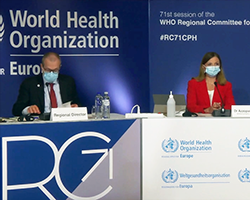The document outlines Montenegro’s strategic plan for health care reform and development from 2003 to 2020, focusing on improving population health, increasing system efficiency, and adapting to international health standards and best practices. The analysis below highlights key elements, challenges, and reform objectives, followed by a breakdown of the healthcare system’s structure and recommendations.
The strategy is aligned with global health frameworks such as the World Health Organization’s (WHO) ‘Health for All’ and other international initiatives. The main goals include:
- Disease prevention and efficient health services are critical to reducing premature mortality.
- Health challenges affect individuals’ ability to work and contribute to social well-being. The strategy emphasizes disease prevention and treatment to minimize such impacts.
- The strategy aims to address socio-economic inequalities in access to health care through targeted interventions.
- Adequate financing mechanisms are necessary to prevent citizens from bearing excessive financial burdens during illness.
The strategy proposes significant reforms to create a more efficient, quality-driven, and financially sustainable health system. The main objectives include:
- Strengthening Primary Health Care: Ensuring that citizens can access quality care at the local level and reducing over-reliance on hospitals.
- Improving System Efficiency: Rationalizing resources and expenditures by integrating preventive care and modern management practices.
- Enhancing Service Quality: Implementing continued education, clinical protocols, and health worker licensing to raise standards.
- Developing a Health Information System: Establishing electronic health records and data infrastructure to improve decision-making and oversight.
Key reform areas described new health laws and regulations that will define service delivery, financing models, and quality control measures. Financing models will be diversified to include both compulsory and voluntary health insurance. Payment methods will be restructured to ensure fair resource distribution and incentivize quality care. Efforts to control rising healthcare expenditures, particularly for pharmaceuticals, will also be prioritized. Training programs will focus on addressing workforce shortages, particularly in nursing and primary care. The strategy emphasizes continued education and licensing for healthcare professionals. Emphasis will be placed on preventing chronic diseases, reducing smoking rates, and improving maternal and child health. Public awareness campaigns will encourage citizens to take greater responsibility for their health.
The Ministry of Health, in collaboration with the Health Insurance Fund and the Public Health Institute, oversees the reform process. Support from international organizations, including the World Health Organization (WHO) and the World Bank, will also be leveraged to facilitate reforms.
Implementation have involved a combination of short-term pilot projects and long-term policy measures. Progress has been monitored through performance indicators and regular evaluations to ensure that the reforms achieved their intended outcomes.
By improving primary care, promoting preventive services, and enhancing system integration, Montenegro aims to create a healthcare system that is accessible, efficient, and sustainable.



